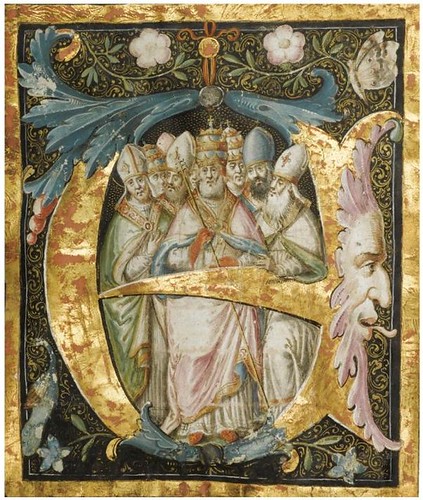
This individual illuminated manuscript initial (spliced together from screencaps) exists as a fragment and was probably produced in Italy in about 1500. It is one of three vellum cuttings taken from choirbooks on sale as a set next month.
Quoting from the Sothebys* catalogue :
"very large historiated initial 'E', 200mm. by 178mm., in burnished gold and coloured acanthus-leaf sprays and an ornamental face, enclosing eight popes and bishops, all on black grounds heightened with liquid gold scrolls and surrounded by naturalistic flower-cuttings, a butterfly and a peacock, all within a rectangular burnished gold frame"
*requires registration to view their sales brochures
Addit 2016: Owner of above initial advises of restoration he undertook.
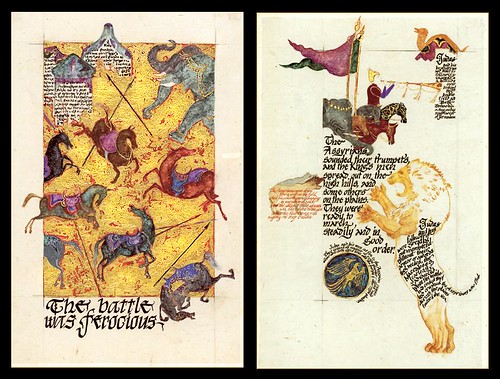
This 22-karat gold leaf and egg tempera illumination on hand made paper comes from the 'Hanukkah Illuminated: A Book of Days' project, © Ellen Frank Illumination Arts Foundation, where there are a number of very interesting modern works featuring manuscript techniques of old on display.
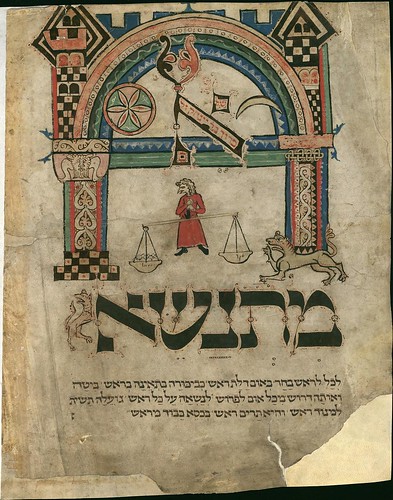
The Jewish National and University Library in Jerusalem have a site devoted to the Mahzor Worms, a two-volume parchment festival prayerbook from the 13th century, featuring Ashkenazi calligraphy, with illumination and decoration in ink and color. [Also see this Metafilter post with links to a variety of Judaica manuscripts]
"The Mahzor was in use in the community of Worms until the synagogue’s destruction on Kristallnacht, November 1938. It was rescued by the city’s archivist, who hid it in the cathedral. In 1957, following legal proceedings in Germany, the manuscript was transferred to the Jewish National and University Library in Jerusalem."

The tetragrammaton - יהוה (Yod, He, Waw and He) - is the Hellenised Hebrew spelling of the name of God - without vowels - in the Old Testament, rendered as Yahweh or Jehovah or Adonai or Lord.
The old fellow in the image is 'holding' the Tree of Life or Kabbalah of Judaism, the ten-stage (sephiroth) path in the physical and metaphysical planes to God. The symbology has been co-opted, with mystical permutations, in various branches of the esoteric systems such as Hermeticism, Gnosis and the like. ['Portae Lucis' means the doors of light]
The book is recorded at the Bavarian State Library as: 'Giqatila, Yôsef Ben-Avraham / Ricius, Paulus: Portae Lvcis H[a]ec est porta Tetragra[m]maton iusti intrabu[n]t p[er] eam, Augustae Vindelicoru[m] 1516 [VD16 J 954]'. Joseph Giqatila was a 13th century Spanish Kabbalistic philosopher.

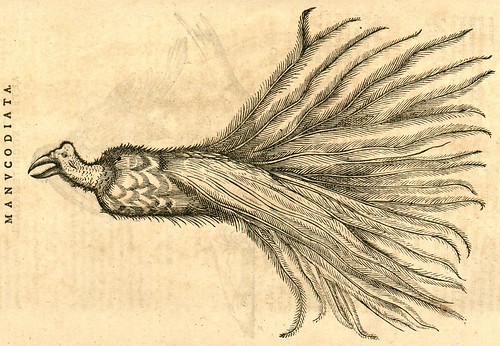
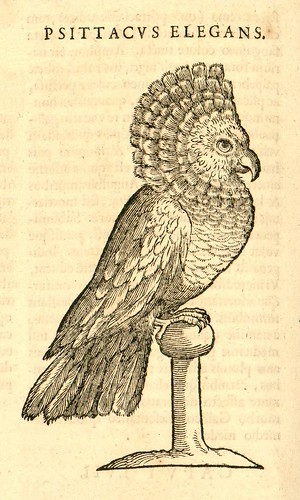
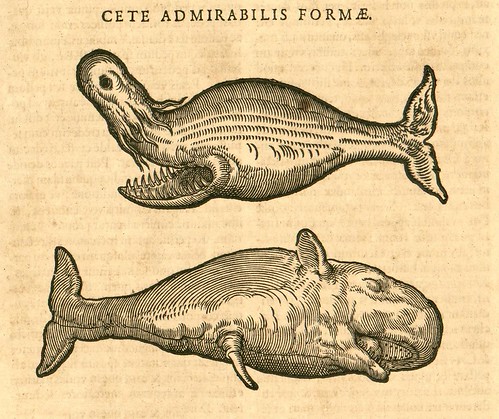

These rather eccentric illustrations come from 'Historia Naturae, Maxime Peregrinae, Libris XVI.', 1635 by Spanish philosopher and scholar, Juan Eusebio Nieremberg. The work, which features more than one hundred and fifty illustrations (they are not all as unusual as these examples), was said to be based largely on an earlier book by Francisco Hernandez, who had been sent to study the fauna and flora of New Spain. Hence, some of the Aztec names for species persist in Nieremberg's book. It is regarded as an important early source work for the Americas, and particularly Mexico. {Some few of the illustrations I have seen before from other sources - eg. Gesner mid-1550s}
The detail images above were sourced from Strasbourg Universities Library (click folder icon top left once inside to load thumbnails).
However, I would now (after just discovering it) very much advocate looking at this book in the excellent flash/turn-the-pages site at the Library of Congress (click 'explore' then 'contents') [part of the Exploring the Early Americas web exhibition]

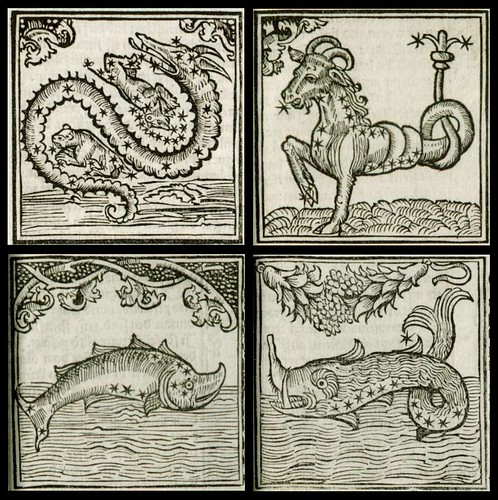

"Johannes Müller von Königsberg, called Regiomontanus, was arguably the most important astronomer of the fifteenth century. [..] It is often said, and justly, that Regiomontanus set the agenda for the reform of astronomy to which Copernicus, Tycho Brahe and Kepler all contributed." [Cambridge University; nb. multiple pages]
"Printed calendars and almanacs became extremely popular in the fifteenth century and provided ordinary people with the basic knowledge required to plan their daily routines. The market for calendars was first tapped by Gutenburg, who published a calendar which calculated the times of new and full moons and planetary positions, with readings every two to three days. All earlier calendars, however, were superseded by those of Regiomontanus (1436-1476) whose calculations were far more accurate[.]" [University of Glasgow Library Book of the Month]
The images above were found in the 1512 edition of the Regiomontanus 'Kalendar' come from Bayerische Staatsbibliothek.

This ~1920s advertisement comes from a newish French regional site, Archives Départementales de l'Hérault, about which I have approximately zero recollection.
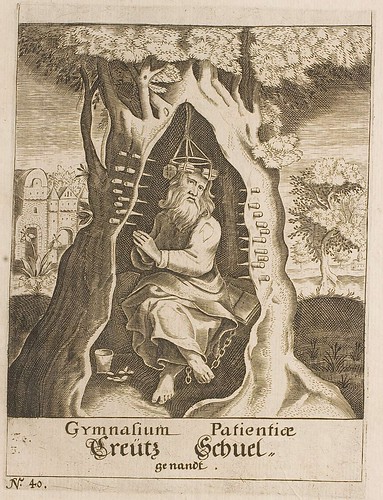
From HAB: 'Gymnasium Patientiae' - by Jeremias Drexel, a Jesuit writer of devotional literature and Professor of Rhetoric/Humanities. [1662 Ed.]
"In this work, Drexel compares the sorrowful life to a school, which man has to pass through. Drexel had been treating this matter before as a preacher to the Bavarian electoral court. The German translation by Joachim Meichel was published in 1630 under the title "Creutz-Schul"." [source]
{There is the odd mention of this being an emblem book, although it only has a few engravings, none more striking that this bewildering example.}

From the early 1950s Persian book of bedtime(!) stories: 'What did Flower do to the Weed', kindly submitted by Kristen Alvanson, an artist living in Shiraz, Iran. She has posted more of the book images to her blog, Lumpen Orientalism: one, two, three.



Gottfried Benjamin Hancke was a Silesian baroque lyricist and these images come from his book of poems from 1731 (1750 Ed. shown),

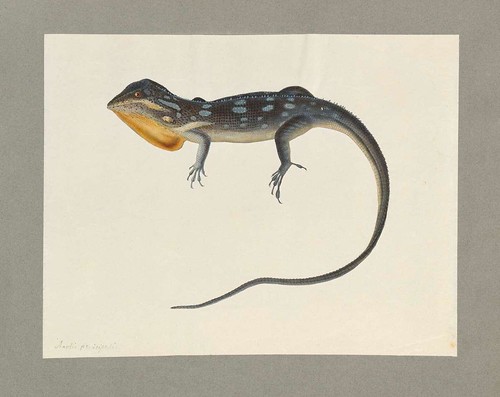
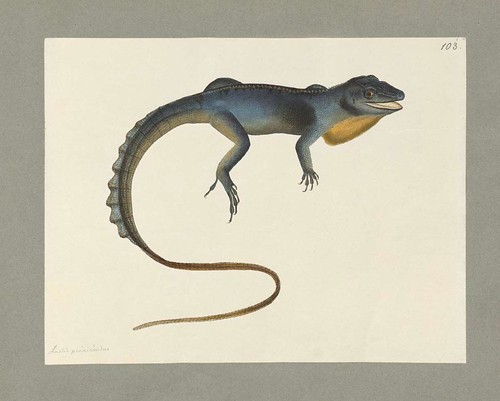
From BSB Cod.icon. 48 a(2 - 'Aquarellzeichnungen von Reptilien II', an anonymous album of watercolour sketches of reptiles from 1805-1808.

The frontispiece from Athanasius Kircher's third and final book on magnetism, 'Magneticum Naturae Regnum', 1667 at HAB, Wolfenbüttel.
"Ultimately, Kircher saw magnetic attraction and repulsion as the lingua franca of all creation, governing friendship, love, sympathy, hatred, chemical reactions, planetary action, heliotropic and selenitropic plants, medicinal plants and stones, the wind, hydraulics, the tides, musical harmony; even the nature of God himself, whom Kircher deemed 'the Central Magnet of the Universe'". [source]
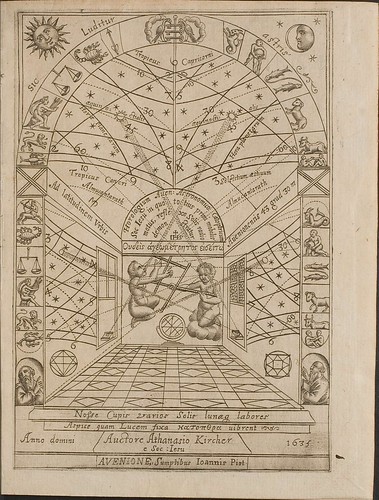

One of Athanasius Kircher's earliest books was his treatise written in Avignon on sundials and published in 1635, 'Primitiae gnomonicae catoptricae', available at HAB. The Astronomical Observatory of Capodimonte has some commentary in Italian [translation]. {They have some nice large - unrelated - frontispieces too, as part of their exhibition site.}
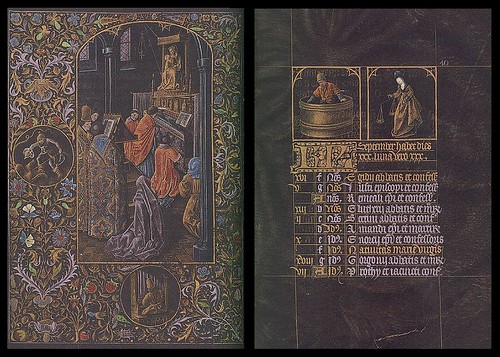
Codex Vindobonensis 1856, published in Vienna in 1930 - "This is a facsimile of Vienna Codex 1856, a Burgundian Manuscript of c.1470 written and illuminated on black vellum." [nb. 1856 is a number, not a date] D & D Galleries have all the illuminated pages out of this unusual manuscript available.
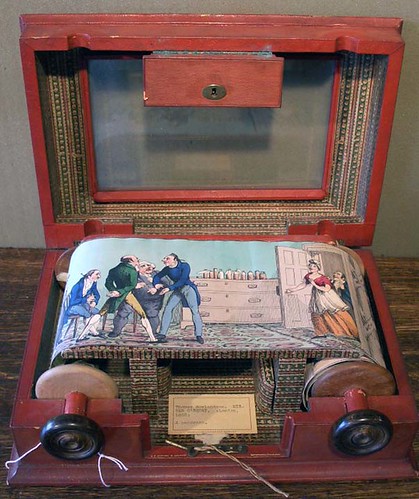
The ever excellent Princeton Graphic Arts blog posted some images from an intriguing specimen in their collection: "a scrolling panorama made up of 12 unsigned, hand-colored etchings, with a narrative in verse, attributed to [Thomas] Rowlandson and titled 'Mister O’Squat'.
Update (June 2011): The whole scroll is now viewable in a zoomify frame (via).
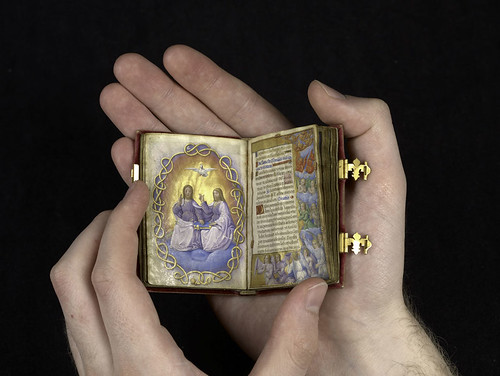
The whole of this exquisite miniature illuminated manuscript, the Queen Claude Prayer Book, is available at The Morgan Library and Museum website. It is definitely worth it to zoom in using the (good!) flash magnifier.

One of the benefits of alerting Aeron (of Monsterbrains) to significant new websites (in this case, the Bodleian Manuscripts collection, mentioned the other day) is the sure knowledge that he will unearth twisted gems such as the image above:
'Fifteen Signs of the Last Judgment'. Manuscript page from the Livre de la Vigne nostre Seigneur, dated 1450-1470.'
Speaking of Aeron, Drawn! points out his 1000 Beasts set on flickr and they are for sale.
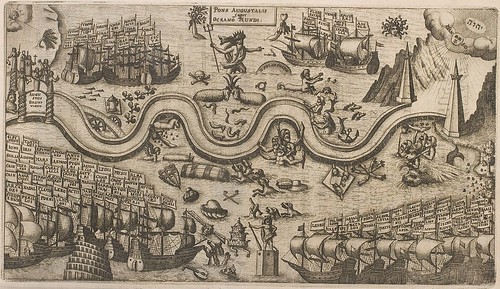
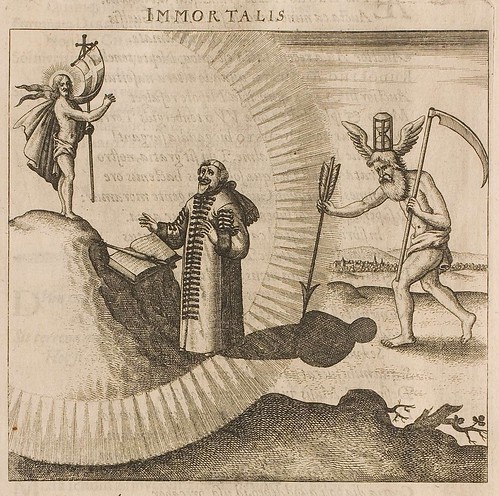
'Fautorum & Clientum Ministrorum Vota & Mele Natalem ... Dn. Augusti, Ducis Brunovici Et Lunaeburgi ... In aula avita Guelphorum Decimo nempe Aprilis Avide & devote Septuagies & sexies excipientia Anno Christi, M.DC.LIV.' 1654 at HAB.
This intriguing work relates to Augustus the Younger (Duke of Brunswick - Wolfenbüttel) and was produced in the last decade of his life. He is another of the great bibliophiles and cultural patrons of the Renaissance/Early Modern periods. His large collection of books formed the basis of the Herzog August Bibliothek in Wolfenbüttel so he is a favoured historical figure with respect to BibliOdyssey. Not so favoured, however, that he will be usurping the mantle of (unofficial) patron of BibliOdyssey from Ottheinrich any time soon. Despite his many good qualities, Augustus is also known to have sent seventy witches and sorcerers to their deaths between 1590 and 1610 in his capacity as Chief Judge of his estate.
The top image is particularly worth seeing in larger format. It seems to be something of a religious homage to Augustus, and packed full of symbolic imagery. The figure in the second image appears to be the spitting image of the Duke.
But wait! there's more: recent bookmarks and the link list.
UPDATE: The Morgan Library Black Book of Hours has been digitised in full (Oct. 2011)



























































16 comments :
Giqatila, actually Xicatella, a town in Catalonia (never in spain. There was no spain in the thirteenth century.) Always the same error...
To each his own, man.
Always the same error...
There are no errors, only portals to discoveries.
Some of the following is true. Not all of the following is true.
1. Giqatila -vs- Xicatella
2. The entry at the German repository actually says: "Giqatila"
3. This blog is a geopolitical revisionist tool hoping to wipe Catalonia out of the history books
4. This blog aims towards a general english speaking (obviously) audience and unless specific locational names are fairly relevant, SPAIN may be used for shorthand as a vague geographical location for places that are now within the Spanish borders.
5. At least I didn't say Portugal. Be thankful for small mercies. But if I had said Portugal, would you have known it was a mistake?
6. When you go into an art gallery and a beautiful painting is hanging in a broken frame, remember also to look at the picture.
7. There is no number seven.
8. Please prepare a 2500 word illustrated history of the Iberian Peninsula so that I can be sure to cross all the tees and dot all the eyes in the future
9. I'm fairly stupid. And lazy.
10. It's all about the pictures, man.
Excellent post, Paul. So much good stuff! I've got another pile of monstrous imagery I managed to dig out of the Bodlian library that I'll be posting later this week. Thanks again for sharing that excellent resource!
Manuscripts on black parchment were something of a fad at the court of the dukes of Burgundy. There are supposedly six left (five of which were made in the Netherlands, the remaining one in Spain). Two examples I know of:
- The Black Book of Hours (Pierpoint Morgan M. 493), prepared around 1475 in Bruges and attributed to the school of Willem Vrelant. There is a nice facsimile edition available from Faksimile Verlag Luzern (the same firm which did the Book of Kells and Lindisfarne Gospel facsimiles), which amounts to the only information online that I could find. (link)
- Les Basses danses de Marguerite d'Autriche (Bibliothèque Royale Albert Iier, Brüssel,
Ms. 9085), also from around 1470, prepared in Flanders. It contains scores and steps for popular dances. A facsimile is available from Adeva.
Thanks indeed Christian.
I believe this is black Hours link for Faksimile Verlag Luzern that you intended.
Indeed - curse my feeble html skills! Thanks for the correction.
Let's see if I can at least get the link to the Adeva facsimile right ;)
Hi!
About black parchments, I also tried to find more information...
https://secure.webland.ch/faksimile/frame_werk38_e.html
Here they explain that there is only 3 black manuscripts left...
(strangely enough, in the french version, they write 6..."'apparition des manuscrits noirs est étroitement liée à l'essor des ducs de Bourgogne. Sur les six manuscrits en parchemin noir conservés jusqu'à nos jours, cinq furent réalisés aux Pays-Bas et un seulement en Espagne dont l'art subit néanmoins une forte influence néerlandaise au cours du XVe siècle."= among the 6 black parchments which survived to this day, 5 were made in Nederland and one only in Spain, with a strong nederlandish influence)
I then arrived on this Blog: http://www.brunolussato.com/plugin/tag/calligraphie
The article about the "elephant skin paper" tells about another manuscript (black book from Charles le Téméraire), but I found nothing else about it... should be in Vienna (where?).
Finally, I found another website:
http://mitglied.lycos.de/oriane/black/blackaoa.htm
I also discovered that there is red parchments:
http://www.bnf.fr/loc/bnf002.jpg
http://www.geocities.com/anouarbassit/culture.htm
2. Lectionnaire sur parchemin teint en pourpre, Italie du Nord (Monza?), vers 800
Département des Manuscrits, Latin 9451.
Parchemin
See also:
http://expositions.bnf.fr/carolingiens/arret/04_4.htm
A nice blue one here:
http://www.ismaili.net/gallery/fat/more/fatimides.html
Thanks for you wonderfull blog!
K.
PS: searching for parchments, I discovered these websites, which may interest you:
http://marauder.millersville.edu/~mosher/bindings/bindings.html
http://diderot.alembert.free.fr/D.html
Thanks for the links, karinet - I did not know about the black manuscript in the Vatican library.
The varying figure as to the number of extant manuscripts come from the fact that some only count the number of manuscripts still bound as a codex (3), and some count fragments (6 or 7, depending if you restrict yourself to text or count the scores in the "basse danses" as well).
There were quite a few bible manuscripts on purple parchment in the sixth century - the Codex Brixianus, the Sinope Gospels, the Codex Purpureus Rosseanensis spring to mind.
As regards blue parchment: The nicest one I have seen was a sutra from the Chusonji-kyo, written with silver and gold ink on a dark blue paper scroll. (It was in the Tokyo National Museum, and I seem to remember seeing a good picture on their website later, but Gojira seems to have eaten their webserver ... Which is a pity, because it's a veritable goldmine!) But the Kyoto National Museum has some scrolls from it as well: the Daijo Hibundari-kyo Sutra.
Well, those really run the gamut, stylistically and for content. The mind boggles. But I wish people wouldn't cut up and sell gorgeous manuscripts...
Magnificent post, fantastic pictures (as always since I started subscribing here).
Just a minor correction: Hancke's book is actually called "Gedichte erster Theil, nebst [etc.]", as can be seen here. It obviously was (or was meant to be) part of a collection of his works, thus the title should be translated as simply "First volume of Poems, including the Satires of the New Church".
Thanks Claus - fixed. I recall I was confused (like that's unusual!) about the name.
And thanks too to Karinet for all the background work (which I've not yet had a chance to look at but will assuredly do so soon).
You are certainly not stupid. Never said that. If I were too brusque, please my excuses... I love your "stuff"... Now, as you are using, though, "asspain" as a geographical term or entity, Portugal is Spain! Spain, Iberia, Hispania... Where the languages and the peoples are, at least, very distincty, five. Toot-toot, live and learn.
Thanks.
The Tokyo National Museum Website is back online - the scroll I was referring to is
here.
Elzi, I don't understand many aspects of European history and geography and what might be obvious to one person is *often* something that I struggle to work out. I just try to be 'fair' and use language that *I* think is appropriate.
The Iberian peninsula is one of those places that I don't know very well - so it's often easier to say 'Spain' than to go into details -----> I try to concentrate on the research for the most immediately important things, so when local names are important, I will try for accuracy. So I'm sorry if I was also abrupt, I meant no offense.
Oh, thanks again Christian!
For anyone still following, I just noticed that Salzburg University have some scans of the (facsimile version of) Pierpont Morgan black Book of Hours online. It was the book of the month in November and is timely: the Faksimile Verlag Luzern page appears to be dead or down (as is Adeva). *sigh* Preserving the originals is easy. Maintaining the digital once again proves to be the more difficult challenge.
And NOW: The Morgan Library Black Book of Hours has now been digitised in full.
Post a Comment
Comments are all moderated so don't waste your time spamming: they will never show up.
If you include ANY links that aren't pertinent to the blog post or discussion they will be deleted and a rash will break out in your underwear.
Also: please play the ball and not the person.
Note: only a member of this blog may post a comment.